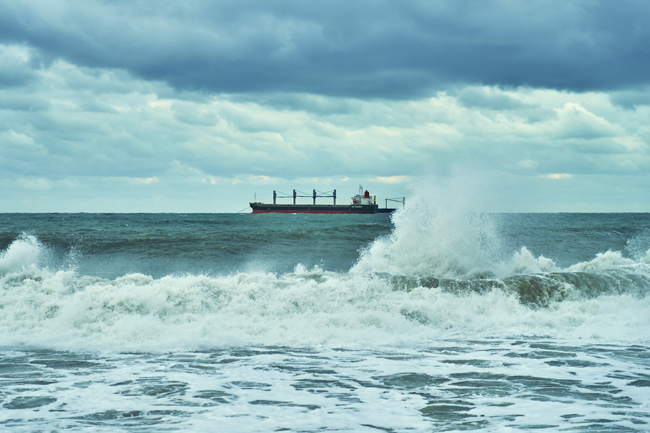

Small leaks are difficult to detect, but matter over centuries. Photo: Flickr.com / Martin Fisch CC BY-SA
Myths about carbon storage – the Sleipner case
The risk of leaks that are difficult to detect and the thorough investigations required to find suitable sites are factors that limit the potential to scale up ongoing CO2 storage projects.
The Sleipner gas field in the North Sea has been used over the years as an example of safe storage of carbon dioxide, but there is a crack ten metres wide and three kilometres long not far from the present extent of stored carbon dioxide. This was shown by an investigation conducted on behalf of the EU several years after the start of the carbon storage project. The crack was located just 25 kilometres from the northern edge of the carbon storage site. A later study confirmed this and stated that the crack and other fissures need to be investigated prior to large-scale carbon dioxide deposition in the Utsira formation.1 If it had been located above the storage area, a major leak could have developed. This shows that the storage site was not subject to a thorough investigation before pumping started.2
Carbon dioxide that is separated from the natural gas from the Sleipner field has been pumped down into the Utsira rock formations under the sea bed for about 22 years, since 1996. The deposition rate has been around one million tons per year. Carbon storage at the Sleipner field is quite cheap, because the carbon dioxide has to be separated anyway before it is sent to consumers. The only costs are for compressing and pumping the gas and monitoring the storage site. The price of carbon dioxide is currently too low to make the commercial storage of carbon dioxide economically viable. The carbon dioxide price must be at least 50 USD/ton, while at present the price is just 6 USD/ton CO2, according to Statoil.
To put these figures in perspective, annual global emissions of carbon dioxide are around 33 gigatons. This is 33,000 times more than the deposition rate in the Sleipner storage facility. You would therefore need 33,000 storage sites the size of the Sleipner facility to handle global carbon dioxide emissions.
Finding a safe storage site with the necessary integrity is a costly and lengthy undertaking. Investigating just one site might cost several million euros, and could take anywhere from three to ten years at the most. Even after such efforts there are no guarantees of a positive result. Finding a large number of storage sites the same size as Sleipner or larger is therefore a very demanding task. A long-term storage site must have practically zero leakage. Even very low leakage rates, as low as 0.1 percent (per year), could undermine the potential climatic benefits of geological storage on a time scale of a few centuries. The success of Sleipner’s carbon storage therefore depends on a low leakage rate. The problem is that it is impossible to detect carbon dioxide leakages in such small volumes. The fact that no leaks of carbon dioxide have been detected so far has been equated to no leaks. To say that no leaks have been detected is not untrue, but this does not mean that there have not been any leaks. We simply don’t know!
Then you have the problem of the safety of the storage site against major leaks. The North Sea bed is subject to earth tremors on a regular basis. Oil and gas exploitation may exacerbate this natural tendency. The layer of rock that keeps the oil and gas in place is called the cap layer. The cap rock also keeps the carbon dioxide from leaking from the storage site to the atmosphere. As stated initially, a big crack located 25 kilometres north of the storage site could have been located right above the site, and it could have led to a major leak. Smaller leaks of hydrocarbons have already been located in the area above the storage site.3
One may therefore conclude that the Sleipner carbon storage facility cannot be used as an example of a successful storage site. The lack of technology to detect the very small leakage rates that will undermine the potential climate benefits of carbon storage is just one factor. The geological hazard of undetected cracks in the cap rock layer is another problem. The general problem of scaling up the location and evaluation of storage sites in their thousands make the use of underground storage of carbon dioxide highly doubtful. This in turn will make the widespread use of CCS technology for removing carbon dioxide either from the combustion of carbon fuels or from industrial processes highly unrealistic.
Tore Braend
1http://adsabs.harvard.edu/abs/2013AGUFMOS13A1683L
2Peter M. Haugan, professor of Geophysics, University of Bergen, Norway.
3Greenpeace briefing 2008.

 Download this issue
Download this issue


























